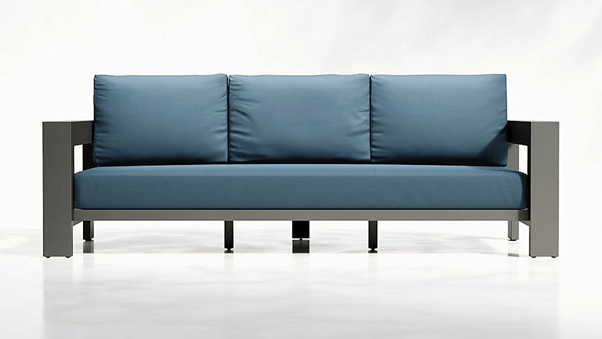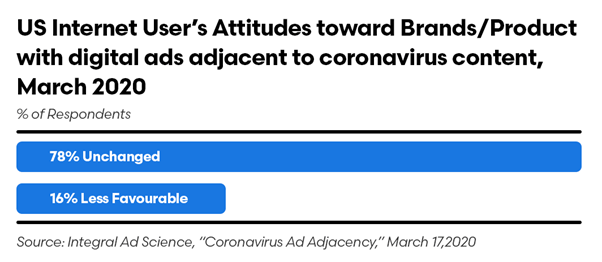To say we are in a year of change is a massive understatement, however learning how to cope and evolve is key, the current economic climate may have changed, however, learning to cope with unprecedented changes is a facet of business since the time of the Madison avenue men to now.
Change is neither good nor bad, it simply is— Don Draper, Mad Men.
Evolution has always been part of life. Embracing change is hard for humans but essential for business. Businesses need to be responsive, move with the times, and not hold on to old ways. Innovation, invention, and technology set the pace and it’s our job to keep abreast and spearhead the changes. Nowhere is “survival of the fittest” more apt than in the business world.
The daily lives for people around the world have changed in ways that would have been unthinkable a few weeks ago. As consumer-facing organizations try to navigate the murky waters of the pandemic, it is important to consider that the minds and behaviors of your consumers are evolving at great speed and the process is playing out quicker than previously imagined.
Running a store with physical products is so much more difficult with people unable to visit showrooms and indulge in their typical purchase behaviors which include touching products, picking them up, and seeing how products are put together to create an enticing arrangement. Whilst touch is typically associated with examining packaging and filling shopping carts, it can also be used to create symbolic connections between buyers and sellers.
In fact, physically holding products can create a sense of psychological ownership, driving must-have purchase decisions. A classic example of this is the layout of an IKEA showroom where different concepts of rooms are created to showcase products, getting people to touch the merchandise, and purchase more.
With the current pandemic environment, creating concepts of rooms and bridging the gap of typical in-store behaviors and capturing customer attention has undergone massive changes and retailers need to undertake rapid digital transformations in order to entice customers.
Here are some great ways to utilize new technologies to simulate close to reality in-store experience digitally.
1. Making a killer first impression with stunning imagery without a photo-shoot
Whether you are posting your goods on Instagram or on the landing page, think of these interaction points as the equivalent of a glass shop window creating an allure that beckons customers to enter your store and explore. Having great staged photographs of your products can help create this ‘glass window’ effect enticing customers to explore and purchase products.
Visual content is more than 40 times likely to get shared across social media than other content. If you want your product to go viral quality photos are key. People emotionally react to visual cues, illustrated by a study conducted by Weebly about the importance of product photographs in e-commerce, it was found that 75% of respondents rated product photos as very influential when they’re deciding whether they want to buy a product online.


Take a look at these two images, which image do you think is more likely to be pinned, saved for inspiration, or is going to create a want? With more and more people changing their behaviors and undertaking home-renovation projects during lockdown or picking up new hobbies, now more than ever getting a spot during your prospective customer’s screentime is key.
Wondering how you can get stunning enviable images with studios being closed and social distancing measures in place?
Well, technology is a glittering lure. But there’s the rare occasion when the public can be engaged on a level beyond flash if they have a sentimental bond with the product — Don Draper
The future of staging these lifestyle images goes beyond just hiring a designer or a photographer. This popular service is going virtual. In fact, virtual staging is cheaper, faster, and easier than physically staging a home — and boasts similar results. Utilizing 3D & CGI technologies typically associated with Hollywood movies these Virtual photographers are able to place your products in any space of your choice. This isn’t limited to just furniture but any product, creating ‘Gram-worthy’ photographs of your product that can be used on your website or even on social media.
Tagging products doesn’t have to be limited to Instagram, tagging products on lifestyle shots on your landing page is a great way to automatically redirect customers to product pages, and create a quick path to purchase.
2. Creating a high converting product page without blindspots
Whilst your landing page and your check-out pages are important, your customers won’t get far unless you create a product page that helps convert a customer. The product page is where the most amount of time is spent when a customer is contemplating the purchase of a product. Product pages are places where you tell the customer what needs your product fulfills or what problem it solves.
Pique your customer’s interest with rich contextual images, explanations, and claims at a glance. When trying to decide what to include on your product pages remember that roadblocks to purchasing may affect your customer’s motivations resulting in a delay in adding to cart.
Begin by uncovering your customer’s motivations for product purchase and identify key objects or concerns that need to be addressed.
These could encompass, size concerns, matching concerns, accessory products available. By addressing standard concerns you can set expectations that would reduce the number of returns on a product, your buyers no longer have to face buyers remorse when they receive your product in the post.
However, how do you know what is too much? Interestingly, having too many photographs of a product can actually spell doom if you’re trying to convince a customer to purchase a product, this goes against traditional e-commerce but the science backs it up. A study published in the Journal of Consumer Research showcased that presenting too many product photos actually alters the way information is processed.
Across six experiments, participants were shown photographs of comparative products, the number of photos was increased and the impact on the overall decision-making process was examined. The results indicated that participants who saw the additional product photos were both less confident about their decision and liked and valued the product less.
How can you provide enough information to a customer with a limited number of photographs and highlight key features in a glance proof, interactive way.
Make it simple but significant — Don Draper
Giving consumers control over information positively affect product understanding and in turn, affect purchase intentions. Using 3D product visualizations help give control to your customer as they explore the product. 3D product visualization can easily support for multi-modal interaction beyond traditional static 2D content-based user interactions.
Adding supporting information that complements your product such as GIFs, and videos can help address customer questions and concerns and help them make a more informed decision. These can be added on your 3D model through hotspots.
Creating 3D renditions of your physical product can not only provide customers with information control but can also help address size and context questions using Augmented Reality (AR) where customers can automatically place your products in their space.
3. Capture your customers where they are- online!
People are like particles. When making decisions people tend to resort to defaults and habits. However, like particles when they hit a countering force they change course. Behavioral consultant Richard Shotton established a relationship between major life events and it’s the subsequent impact on consumer behavior.
In his study, conducted with 3500 participants he noted that on average people were about 2.5x more likely to have tried a new brand in each of the categories if they had undergone a life event. Among those who hadn’t had a life change, 8% had switched brands compared to those whose lives had recently changed, 21% had switched brands.
Social distancing & quarantining is comparable to a major life event, with the pandemic radically disrupting an individual’s environment more so than changing jobs or starting university, implying that the scale of brand switches or trialing of new products could be predictably larger.
Furthermore, the phenomenon that previously existed in a niche now extends to a broad group of people versus a sub-section. The main implication of this is that your customer’s habits are changing, from the way they consume content to the way they purchase products and this change is predicted to continue even after social distancing ends.
Buying habits are changing and now more than ever you should invest in advertising.
 Keep an ear on social! Using social listening tools, make sure you keep a pulse on what your customers are searching for.
Keep an ear on social! Using social listening tools, make sure you keep a pulse on what your customers are searching for.
Popular searches currently range from ‘Creating an efficient WFH environment’, ‘Creating great impressions on Zoom’, ‘How to bake bread’
With people spending more time indoors it is crucial to identify key touchpoints where you can interact with your customers across social media and on your website and by harnessing the right technologies being able to get the spotlight in customer’s fleeting attention spans is easy and scalable.
Going the extra mile and using the latest technologies to stand out can do wonders for your online store with respect to your brand and your reputation giving you that much-needed edge from the competition. The more effort and the more interactive your online presence the more interest you can garner from shoppers and potential customers.
Success comes from standing out, not fitting in — Don Draper
The simplest change can have a significant impact on your business, enticing customers from the get-go with stunning imagery to creating interactive touchpoints using 3D and Augmented Reality can not only help improve the online purchase journey, shorten a buying cycle and inspire great confidence; the greatest benefit is being able to provide your customers with a satisfying experience close to reality.
About the Author
 Sai Krishna is often described as an accidental entrepreneur. As an engineering undergrad, Sai built his first startup in the education technology space to power thousands of students to better use tablet PCs. He is also an alumnus of Stanford University Graduate School of Business, and the founder of Scapic, a cloud-based virtual and augmented reality content platform helping eCommerce businesses make AR/VR shopping experiences without coding. Scapic’s technology has powered immersive experiences for a variety of sectors with clientele including Walmart, Royal Enfield and Airbus.
Sai Krishna is often described as an accidental entrepreneur. As an engineering undergrad, Sai built his first startup in the education technology space to power thousands of students to better use tablet PCs. He is also an alumnus of Stanford University Graduate School of Business, and the founder of Scapic, a cloud-based virtual and augmented reality content platform helping eCommerce businesses make AR/VR shopping experiences without coding. Scapic’s technology has powered immersive experiences for a variety of sectors with clientele including Walmart, Royal Enfield and Airbus.
